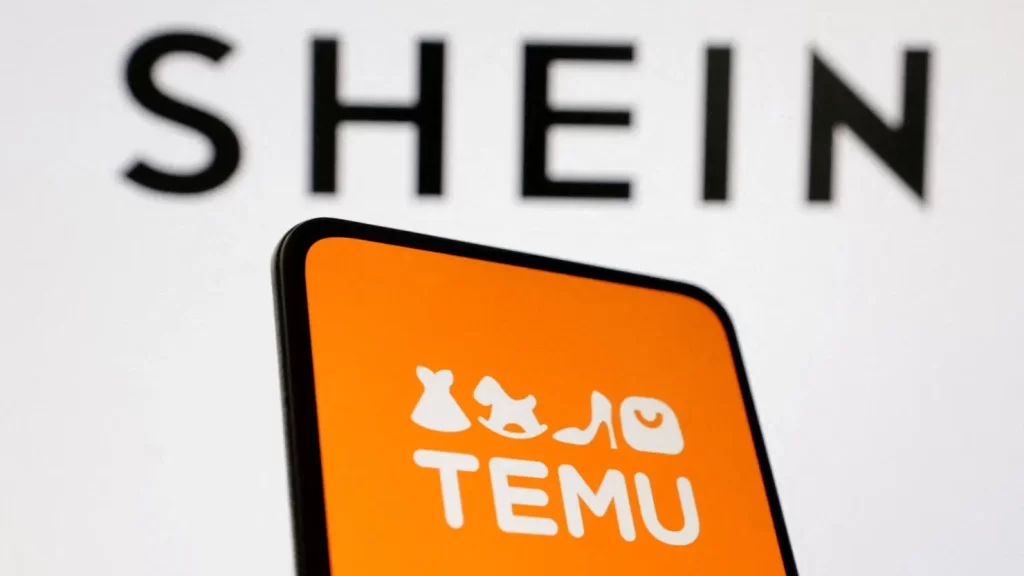Key Points
- Budget e-commerce giants Temu and Shein are experiencing a steep decline in U.S. activity following new tariffs and the closure of the de minimis trade loophole.
- Temu’s daily active users (DAUs) in the U.S. dropped 52% in May compared to March, while Shein’s fell by 25%, according to Sensor Tower data shared with F.M.I.E Sources.
- Both companies have also drastically reduced their advertising spend in the U.S. market.
Temu and Shein See Sharp U.S. Decline Amid Tariff Pressures and Trade Rule Changes
Use of low-cost e-commerce platforms Temu and Shein has dropped significantly in the U.S. following President Donald Trump’s latest tariff policies and the removal of the de minimis exemption, according to newly released data.
Sensor Tower data shared with F.M.I.E Sources reveals that Temu’s U.S. daily active users plummeted by 52% in May 2025 compared to March, just before the tariffs were announced. Shein’s DAUs saw a 25% decline over the same period.
Monthly active users (MAUs) also declined—Temu’s were down 30%, and Shein’s fell by 12%—further highlighting a sharp fall in user engagement across both platforms.
The data also showed that Temu’s ranking in Apple’s App Store slid to an average of 132 in May, a dramatic fall from its top 3 position a year earlier. Shein’s average rank dropped to 60, down from a consistent top 10 placement in 2024.
Neither Temu nor Shein provided responses to F.M.I.E Sources’ requests for comment.
This sharp user drop-off coincides with major cuts in U.S. ad spending. In May 2025, Temu slashed its advertising budget by 95% compared to the previous year, while Shein’s was reduced by 70%.
“The decline in ad spend became visible in April itself, with Temu’s spend down 40% year-on-year and Shein’s falling 65%,” said Seema Shah, vice president of research and insights at Sensor Tower, in an email to F.M.I.E Sources.
The downturn follows Trump’s announcement in April of sweeping tariffs on Chinese imports. One major change was the elimination of the de minimis exemption effective May 2, which had previously allowed shipments under $800 to enter the U.S. tariff-free.
To adapt, both Temu and Shein have adjusted their logistics models. Temu, in particular, is moving away from a dropshipping model and building out U.S.-based warehousing infrastructure to comply with the new trade rules.
“These regulatory hurdles and cost increases are clearly slowing down the growth potential of Chinese platforms in the U.S.,” said Rui Ma, founder and analyst at Tech Buzz China.
Tech Buzz China’s March research indicated that a 50% tariff threshold would significantly erode Temu’s price competitiveness. The new tariff rate on former de minimis goods currently stands at 54%, after being reduced from a steep 120% under a 90-day trade truce.
International Expansion in Focus
Despite the slowdown in the U.S., Temu is seeing significant growth globally. Last week, its parent company PDD Holdings reported underwhelming Q1 earnings and cited U.S. tariffs as a key factor hurting sellers.
Nonetheless, international markets now make up the bulk of Temu’s user base. According to HSBC, non-U.S. users account for 90% of Temu’s 405 million global MAUs in Q2. Growth was particularly strong in Europe, Latin America, and South America—especially in less affluent regions.
“Many Chinese e-commerce firms are now refocusing their strategies toward international markets like Europe,” said Rui Ma.

